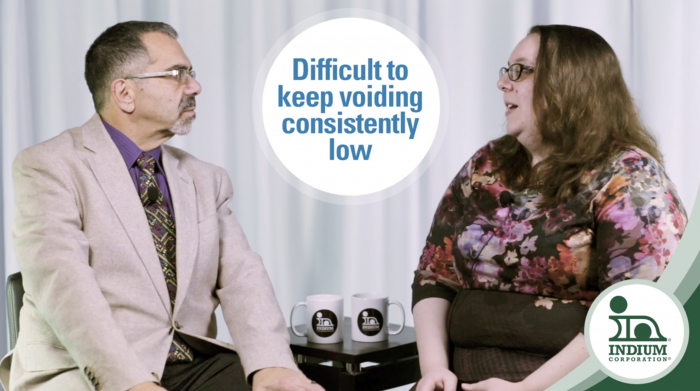Brook Sandy-Smith, Technical Support Engineer for PCB Assembly Materials, and Phil Zarrow, discuss how vacuum reflow soldering can be used to reduce voiding.
Phil Zarrow: Brook, there's been a lot of discussion in the industry about mitigating voids. A lot of this has been focused on solder joints and of course BTCs. But there are other applications that are really screaming, for lack of a better word, for near zero voiding. LEDs come to mind. Tell us a little bit about some of the approaches for reaching near zero voiding.
Brook Sandy-Smith: Solder paste has a limitation. In the best-case scenario, you could be expecting less than 10% voiding, but there will be some variation. I've seen some results that are less than five, but it's hard to keep that consistent.
Phil Zarrow: Right.
Brook Sandy-Smith: Sometimes with LEDs you might be able to get away with using a flux-coated preform that gives you an even solder joint volume, and the flux-coating doesn't have volatiles, so you can achieve the very low, less than 2% voiding that you're looking for. But typically, people resort to a process like vacuum reflow soldering in order to achieve consistent results that are less than 2%. This process is like a reflow oven, but then there's a batch stage late in the process where you apply a vacuum to allow the voids and the bubbles of volatiles to escape.
Phil Zarrow: With this particular process, whether we're talking a reflow oven or a vacuum quick vapor phase, there's some caveats. Obviously, throughput is one.
Brook Sandy-Smith: Of course.
Phil Zarrow: And we've seen some interesting approaches taken by the oven manufacturers in trying to overcome this. What are some of the things you've seen?
Brook Sandy-Smith: Sometimes they have two vacuum stages, so they can run in parallel and keep the throughput pretty good while achieving that very low voiding result.
Phil Zarrow: Okay. The other aspect of course is the actual reflow process. What's happening?
Brook Sandy-Smith: Well, splatter could happen if you don't apply the vacuum either at the right time or if you apply it too quickly, because you want to preheat your solder material just like you would with solder paste so that you activate the flux and promote good soldering. As the solder reaches the melting point, you want to allow it to wet and then apply the vacuum. The vacuum will draw out the voids while everything's molten. Then you release the vacuum, and that's when you get the void free solder joint, and then you can have the cooling process.
Phil Zarrow: This is great in a sense that we actually have very near zero voiding, but it's not a plug and play. There is process development, right?
Brook Sandy-Smith: Absolutely.
Phil Zarrow: Obviously, the throughput and splatter matters and things along those lines. Also, this equipment tends to be fairly expensive too.
Brook Sandy-Smith: Absolutely. It is expensive. The cycle time is really a challenge I think. But like we said, machines have been modified to keep that cycle time reasonable.
Phil Zarrow: And that old caveat, everything goes that's application driven. Brook, where can we find out more information on this subject?
Brook Sandy-Smith: Well, you can check out some application notes on our website or as always you can contact me directly at bsandy@indium.com.
Phil Zarrow: Brook, thank you very much.


